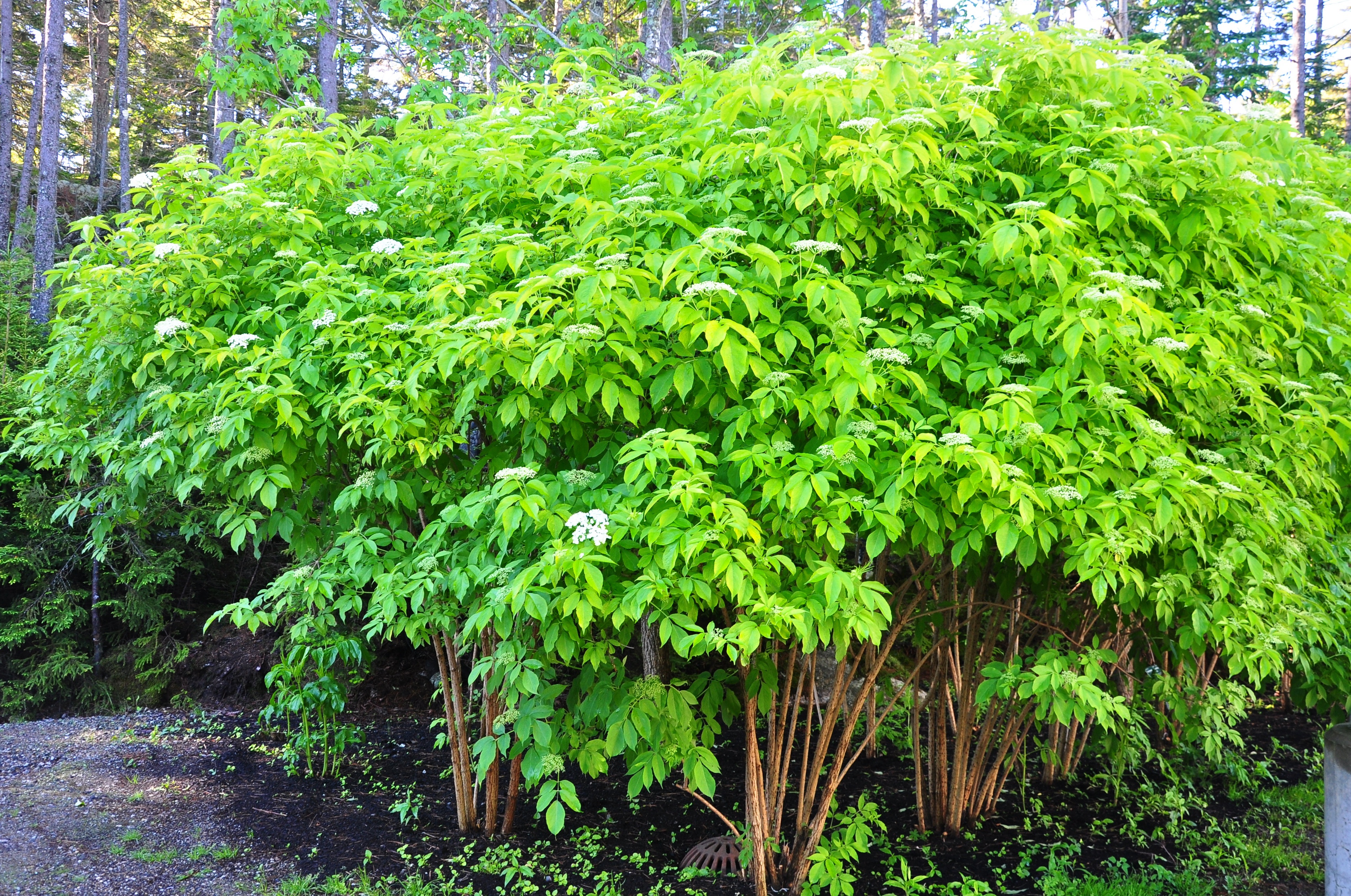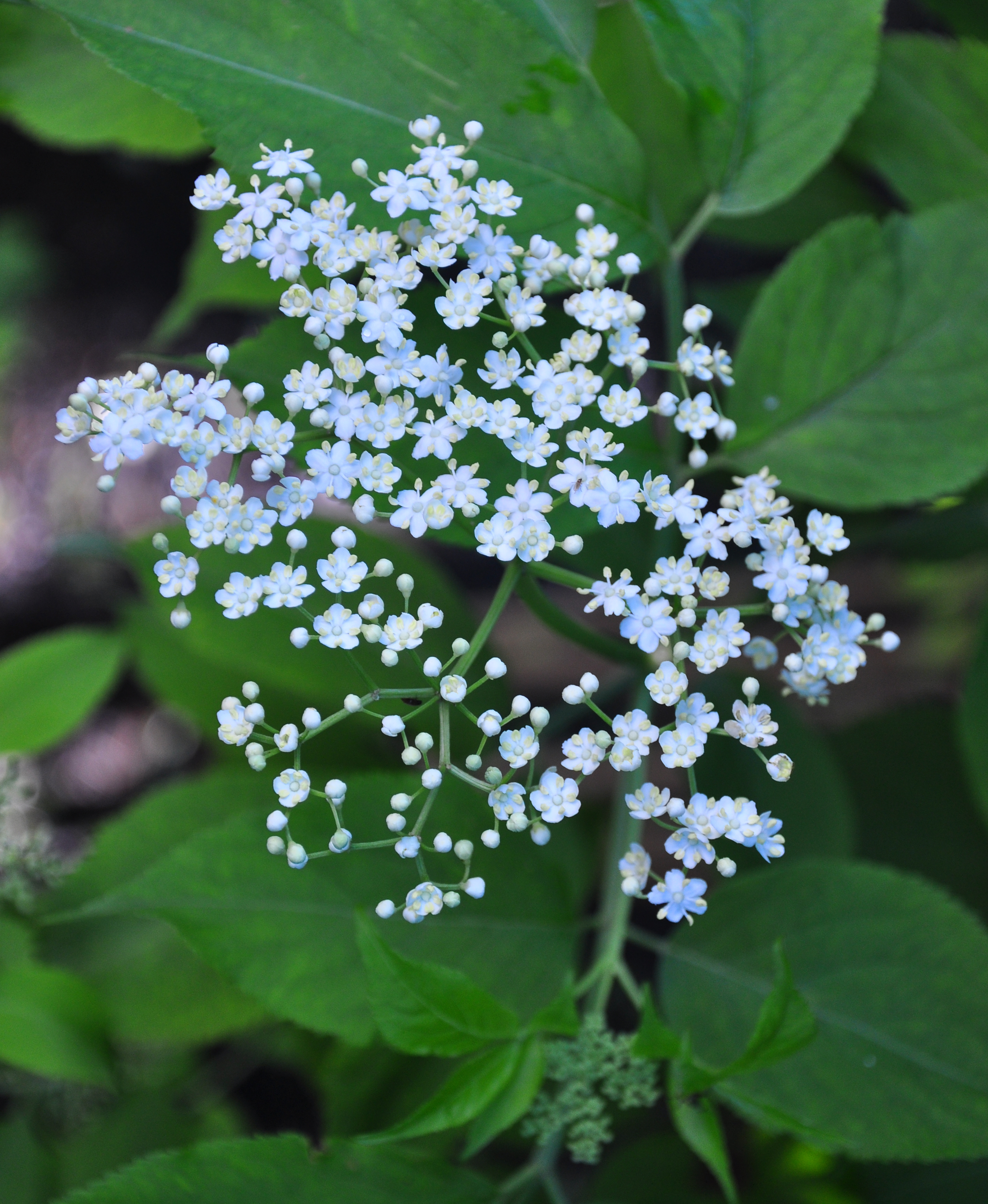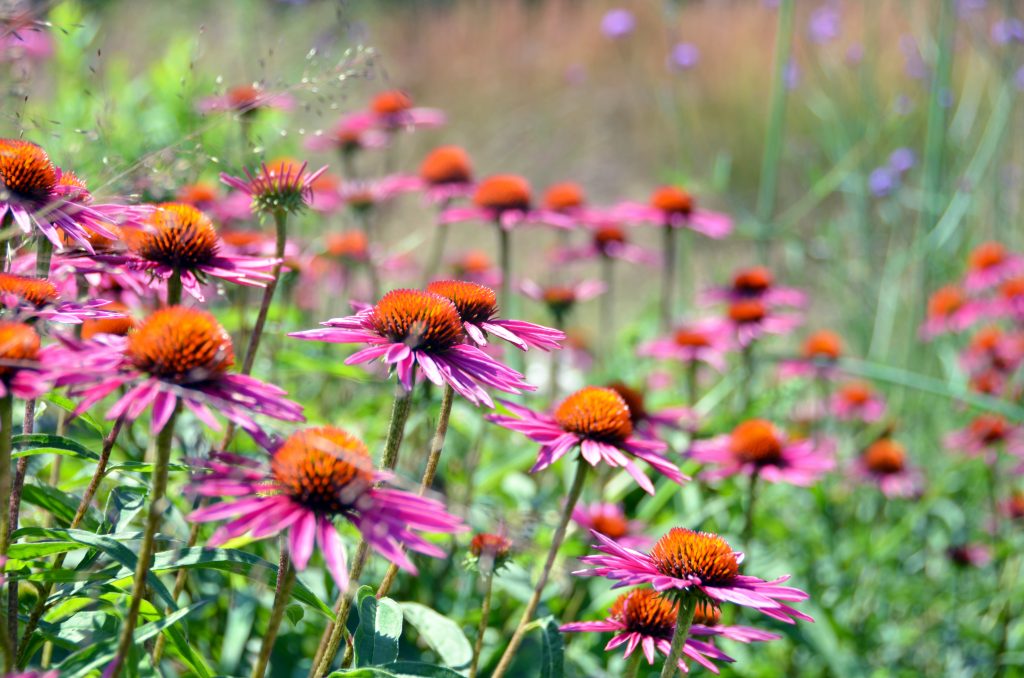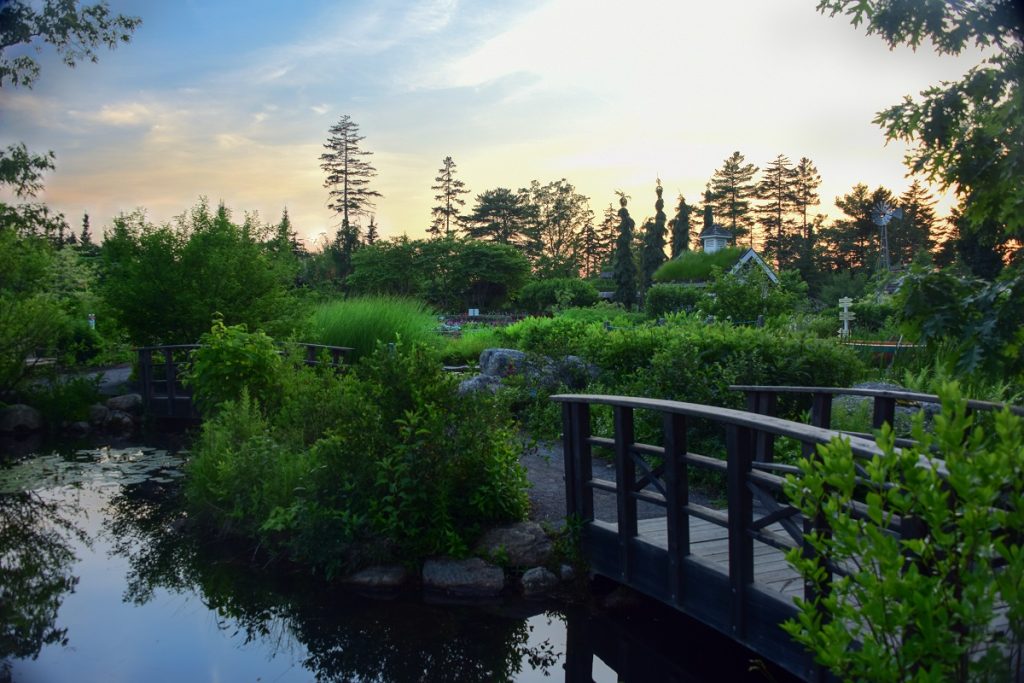Let me introduce you to elder, one of my favorite herbs of all time. Not only is this herb incredibly diverse, it’s also just plain beautiful (by the by, elderberries, if you didn’t know, make the most fabulous blue-purple dye).

Sambucus canadensis ‘Aurea’ Golden American Elderberry
Most people think elder plants are trees, but technically they’re shrubs. They tend to grow wild all along the East Coast, and even as far inland as the Central Plains. Here in Maine, you can probably just scavenge the surrounding woodlands for elder—if you know what you’re doing, you’ll find elder everywhere. In June and July, look for fragrant white flowers growing in flat, star-like clusters. The deep purple-black, blue, or dark red berries arrive in late summer. The stems are greenish brown and, when broken, reveal a white pith. Leaves grow opposite one another and have an uneven number of leaflets (usually 5 to 11). I’m sure you don’t need me to remind you to be sure you’re confident identifying elder before you go picking berries, or that you need permission if you’re not on your own land.
 Elder grows wild, so if you’re foraging, choose a spot far from a roadside and well away from any potential pesticide/chemical fertilizer use. Look for black or Canadian elder. Avoid red elder, as it tends to be a little too toxic for the human body (resulting in some uncomfortable digestion issues and poor assimilation). The flowers are the best-tasting and easiest part of the plant to harvest for herbal preparations; harvest these after they bloom, but before they wilt away. Pick in midday, after the dew has dried. Harvest the berries when they’re ripe and pluck easily from the stalk. Never eat raw berries; they’ll make you sick unless you cook or dry them — then they’re perfectly safe.
Elder grows wild, so if you’re foraging, choose a spot far from a roadside and well away from any potential pesticide/chemical fertilizer use. Look for black or Canadian elder. Avoid red elder, as it tends to be a little too toxic for the human body (resulting in some uncomfortable digestion issues and poor assimilation). The flowers are the best-tasting and easiest part of the plant to harvest for herbal preparations; harvest these after they bloom, but before they wilt away. Pick in midday, after the dew has dried. Harvest the berries when they’re ripe and pluck easily from the stalk. Never eat raw berries; they’ll make you sick unless you cook or dry them — then they’re perfectly safe.
Elder is what herbalists call a diaphoretic, meaning it brings blood to the surface of the body, causing the body to sweat. Why on earth would you want to induce a sweat? For one, if you’re someone who’s constantly chilly, elder is a really good method of staying warm. You won’t really sweat, but you’ll be able to make better use of the heat your body produces. Just a note: You’ll want to use a fresh-flower tea to heat the body.
If you’re a hot-blooded type of person, elder can help you cool down. As it brings blood to the surface of the skin and induces sweating, your body releases heat. Infuse dried flowers as a tea for this benefit.
But elder isn’t just for opening up the pores and vessels of and near the skin; it also opens up every channel of the body. These channels include blood vessels, bronchioles (those branches of your lungs that, when closed, make it difficult to breathe), colon and kidneys — basically anything that pumps or transports anything. This opening up allows fresh oxygen to move more swiftly and easily through the body, bringing energy and health to stagnant organs. It also allows waste to be removed more quickly and easily. This action is relaxing and good for things like spasmodic coughs.
Finally, elder is also an astringent, which means that it tightens tissues. This makes it good for cleansing and toning the skin as well as soothing sore throats, drying mucus and easing such conditions as bleeding gums, ulcers and sores in the mouth.
All of these benefits can be found in the fresh or dried flowers, as well as the berries. But the burgundy-colored berries also help build the blood. All that color indicates a rich supply of nutrients vital to healthy blood and organs, especially vitamins A and C. The vitamin C makes elder a fantastic virus/cold/flu fighter. Brew up a cough syrup or flu-fighting tea (see below) as soon as you feel under the weather.
Teas
Flu-fighting tea.
Elderberries make an incredibly flavorful and comforting beverage for cold, flu and/or allergy season. Simply simmer 1 tablespoon dried elderberries and 1 teaspoon elder flowers (if you have them) in 1 cup water for 10 minutes. Strain, then add honey or sweetener of choice, a dash of lemon and a touch of brandy (optional, but especially good if you’re trying to get to sleep). Feel free to drink three cups a day. You shouldn’t have any issues with this tea, but some individuals can experience intestinal discomfort. If you do, just scale back the frequency of the dose, or cut the amount of elderberries in your brew.
Tea for breaking a fever.
Elder and yarrow flowers are ideal for breaking a fever. Now, remember: most fevers are perfectly normal and you can let them run their course; all a fever is doing is raising the body’s temperature enough to make it an inhospitable environment for the current unwanted tenant. Nonetheless, fevers are uncomfortable and it’s nice to get them over with as quickly as possible.
Place ½ tablespoon elderflowers, 2 teaspoons yarrow flowers, and 1 tablespoon chamomile flowers in a preheated mug (for kids, use 1 teaspoon of each herb). Pour a cup of boiled water on top, cover, and steep for 10 minutes. Strain, then add honey and lemon juice to taste. Adults can drink a cup four times daily (and it’s safe for women who are pregnant or breastfeeding). Note: If your fever persists longer than a few days or is higher than 103°F, seek medical advice.
Elderberry Syrup
This is one of my favorite ways to take elderberries. Since I’m not a fan of honey, I usually replace it with good, grade B maple syrup (local, if possible). This is also a good option if you’re making this for kiddos under 1 year old.
To take this sweet remedy, try a tablespoon either on its own or dissolved in some warm water. This is especially fabulous first thing in the morning during the cold and flu season.
Ingredients:
- 1 cup fresh or ½ cup dried organic elderberries
- ½ teaspoon clove powder
- 1 teaspoon ginger powder
- 1 teaspoon cinnamon
- 1 cup raw honey or maple syrup
Method: (Makes 8 ounces)
- In a medium saucepan, combine the berries, clove, ginger, cinnamon, and 3 cups water. Bring everything to a boil, then reduce the heat and simmer for 30 minutes (the water will boil off a bit; that’s okay).
- Using a potato masher or the back of a ladle, smush all the berries into the liquid, then strain the whole business. Let cool for 10 minutes.
- Add the honey or maple syrup and blend well. Bottle and store in the refrigerator. It should keep for about 3 months.
– Amy Holt, CMBG Writer/Editor and master herbalist
Amy (Jirsa) Holt is the author behind Herbal Goddess: Discover the Amazing Spirit of 12 Healing Herbs, which can be found in our Gardenshop. A recipe for Elderberry Toffee Cookies can be found in the book!

